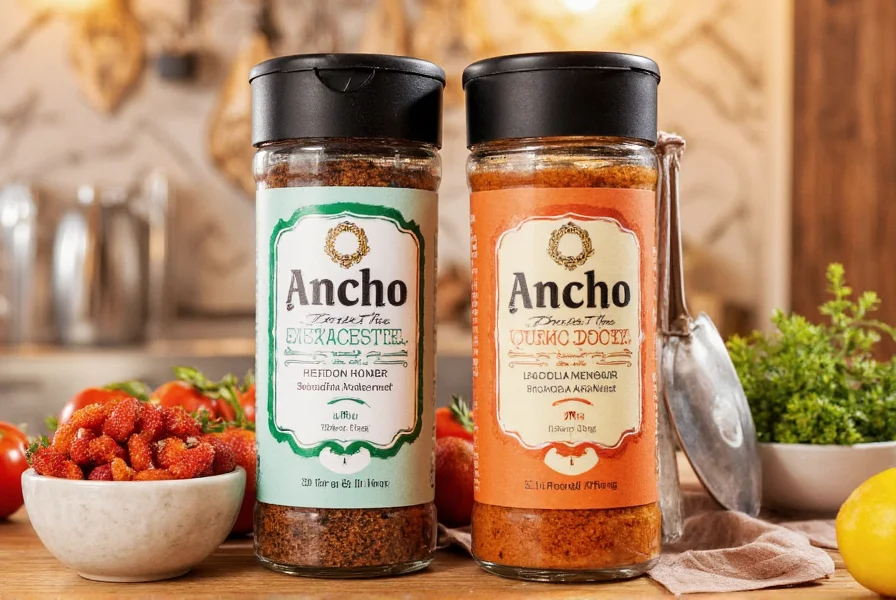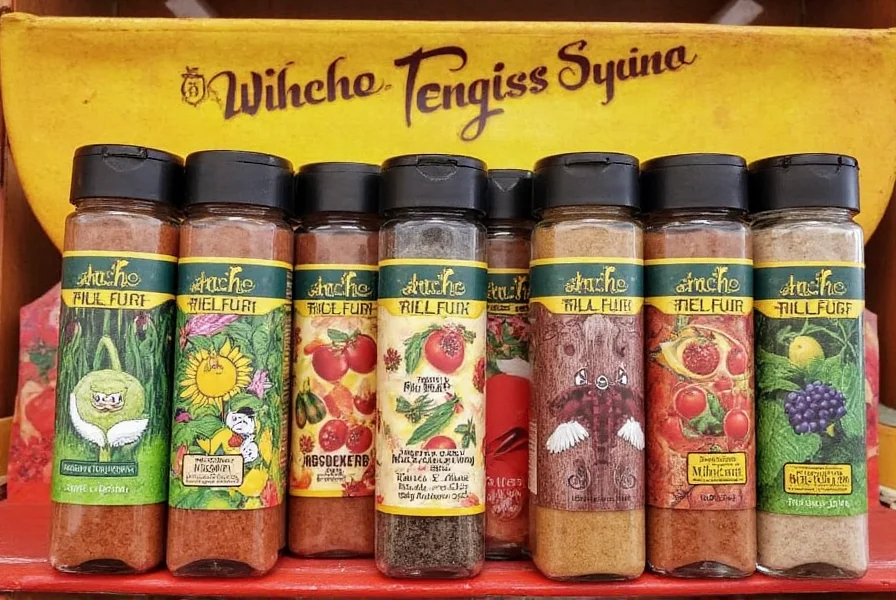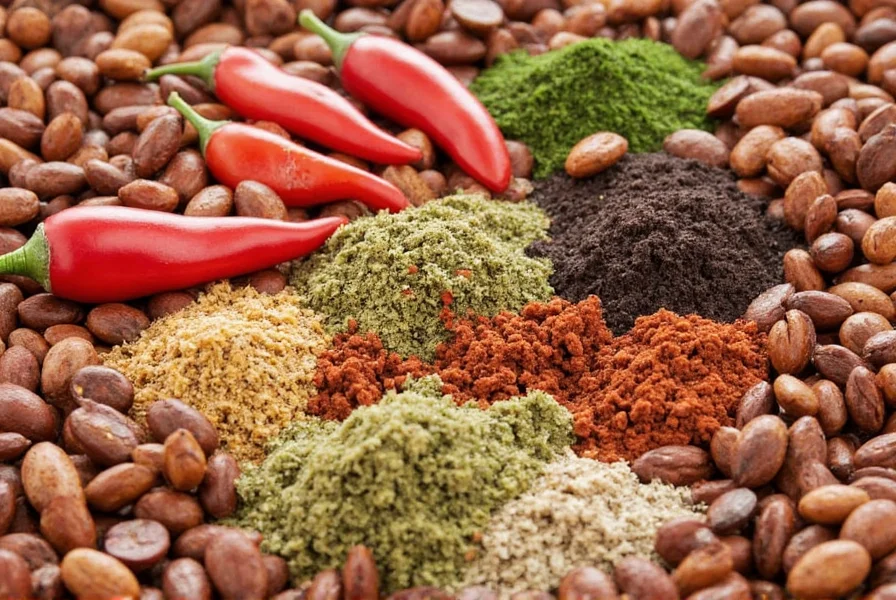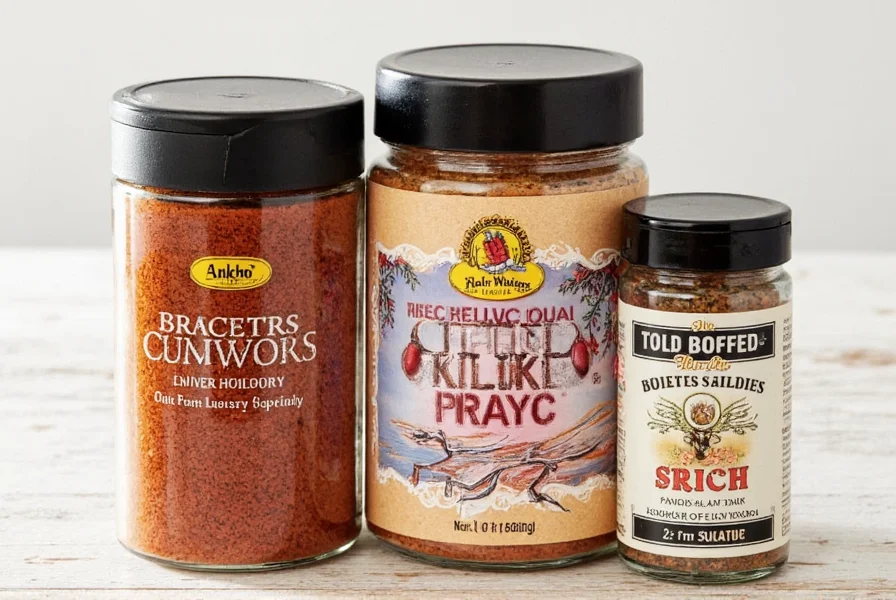If you've searched for 'ancho English', you're likely wondering what this term means. Here's the key clarification: 'ancho' is not translated in English culinary contexts. 'Ancho' (pronounced 'AHN-choh') is the Spanish word for 'wide', describing the shape of this dried poblano pepper. In English recipes and cooking terminology, we use 'ancho chili' or 'ancho pepper' directly - there is no separate English translation for this specific ingredient. This article explains why 'ancho English' isn't a real culinary term while providing everything you need to know about this essential spice.
Table of Contents
- Why 'Ancho English' Isn't a Real Culinary Term
- What Is Ancho Chili Powder? A Complete Guide
- Understanding the Unique Flavor Profile of Ancho Chili
- 5 Practical Ways to Use Ancho Chili Powder in Your Kitchen
- Buying Guide: How to Choose Quality Ancho Chili Powder
- Ancho Chili Powder vs Other Chili Powders: Side-by-Side Comparison
- Proper Storage Techniques for Maximum Flavor Retention
- Frequently Asked Questions About Ancho Chilies
Why 'Ancho English' Isn't a Real Culinary Term
When searching for 'ancho English', many home cooks and recipe enthusiasts encounter confusion. Here's the linguistic reality: the term 'ancho' remains unchanged in English culinary terminology. The word 'ancho' comes from Spanish, where it means 'wide' - referring to the broad shape of the dried poblano pepper. Unlike some food terms that get translated (like 'crema' becoming 'sour cream'), 'ancho' stays as 'ancho' in English recipes and cooking discussions.
People often search for 'ancho English' when they're:
- Looking for information about ancho chilies written in English (rather than Spanish)
- Mistakenly believing 'ancho' has an English translation
- Trying to understand what 'ancho' means in culinary contexts
The confusion makes sense - many Spanish food terms do get translated. But in professional and home cooking worldwide, 'ancho chili' is the standard term used in English-speaking countries. Chefs and recipe developers don't say 'wide pepper' when referring to this ingredient.
What Is Ancho Chili Powder? A Complete Guide
Ancho chili powder is the ground form of the dried poblano pepper - the same green pepper commonly stuffed in restaurants when fresh. When the poblano pepper is dried, it transforms into the ancho chili, developing a deep red hue, wrinkled texture, and complex flavor profile that makes it indispensable in Mexican cuisine.

This spice delivers more than just heat; it layers dishes with notes of raisin, tobacco, coffee, and earthiness. With a mild heat level (1,000-2,000 Scoville units), it's perfect for everyday cooking without overwhelming your palate - making it ideal for those who appreciate flavor complexity over intense spiciness.
Understanding the Unique Flavor Profile of Ancho Chili
Ancho chili powder stands out due to its distinctive flavor characteristics. Here's what makes it special:
- Sweet & Smoky Balance: Unlike many hot spices, ancho offers gentle warmth balanced by natural fruitiness
- Umami-rich Complexity: Its roasted qualities bring depth similar to caramelized onions or dark chocolate
- Exceptional Versatility: Works in sauces, marinades, dry rubs, soups, and even some dessert applications
| Flavor Component | Description |
|---|---|
| Heat Level | Mild (1,000–2,000 Scoville units) |
| Primary Taste Notes | Fruity, earthy, slightly sweet with subtle tobacco notes |
| Ideal Applications | Moles, adobos, enchilada sauces, chili powders blends |

5 Practical Ways to Use Ancho Chili Powder in Your Kitchen
Now that you understand what ancho chili is (and isn't), here's how to use this versatile spice effectively:
- Authentic Enchilada Sauce - Blend 2 tablespoons ancho powder with 3 cloves minced garlic, 1 chopped onion, 2 cups tomatoes, 1 teaspoon cumin, and 2 cups broth for a restaurant-quality sauce
- Signature Meat Rubs - Combine 3 parts ancho powder with 2 parts smoked paprika, 1 part brown sugar, salt, and pepper for a balanced dry rub
- Flavor-Boosting Soups & Stews - Add 1-2 teaspoons to tomato-based soups, chili, or bean stews for depth without overwhelming heat
- Homemade Tortilla Chips - Toss cut corn tortillas with 1 tablespoon oil and 1 teaspoon ancho powder before baking for a flavorful snack
- Unexpected Dessert Enhancer - Add a pinch to chocolate dishes like brownies, truffles, or spiced hot chocolate for intriguing complexity

Buying Guide: How to Choose Quality Ancho Chili Powder
Not all ancho powders deliver authentic flavor. Follow these professional tips to select the best product:
What to Look for When Buying Ancho Chili Powder:
- Purity Check: Verify it's 100% ground ancho chili with no fillers like cornstarch or additional spices
- Freshness Indicators: Should have a vibrant aroma - stale powder smells dusty or musty
- Color Quality: Deep reddish-brown color indicates freshness; pale powder suggests age
- Origin Matters: Mexican-grown anchos (particularly from Oaxaca or Puebla) offer superior flavor
| Brand | Key Advantages | Ideal For |
|---|---|---|
| La Costeña | Authentic Mexican sourcing, consistent quality, vibrant color | Traditional Mexican recipes requiring authentic flavor |
| McCormick Gourmet | Widely available, reliable flavor profile, consistent grind | Everyday cooking when authentic Mexican brands aren't accessible |
| Prima Gusto Organic | Certified organic, robust aroma, no additives | Health-conscious cooking and organic meal preparation |

Ancho Chili Powder vs Other Chili Powders: Side-by-Side Comparison
Understanding how ancho compares to other common chili powders helps you make informed recipe decisions:
| Spice | Heat Level (Scoville) | Flavor Characteristics | Ideal Applications |
|---|---|---|---|
| Ancho Chili Powder | 1,000–2,000 | Sweet, earthy, mildly smoky with fruit notes | Enchiladas, moles, complex sauces, flavor bases |
| Cayenne | 30,000–50,000 | Sharp, intense heat with minimal complexity | Hot sauces, spicy marinades, heat-focused dishes |
| Chipotle Powder | 2,500–8,000 | Intensely smoky with moderate heat | BBQ rubs, Tex-Mex dishes requiring smoke flavor |
| Sweet Paprika | 0–500 | Mild, sweet, primarily for color | Garnishing, Spanish dishes, color enhancement without heat |

Proper Storage Techniques for Maximum Flavor Retention
Preserve your ancho chili powder's vibrant flavor with these professional storage methods:
- Light Protection: Store in opaque containers or dark cabinets - light degrades spice compounds
- Airtight Sealing: Use glass jars with tight seals rather than original plastic bags
- Temperature Control: Keep in a cool place away from stoves, ovens, or direct sunlight
- Moisture Management: Add a food-safe silica packet in humid climates to prevent clumping
- Freezer Storage: For long-term preservation (6+ months), store in the freezer in airtight containers
For optimal flavor, use ancho chili powder within 6-12 months of opening. Test freshness by rubbing a small amount between your fingers - fresh powder releases a strong, pleasant aroma while stale powder has little scent.
Frequently Asked Questions About Ancho Chilies
Here are answers to common questions about ancho chilies to clarify terminology and usage:
What does 'ancho' mean in English?
'Ancho' is Spanish for 'wide' or 'broad,' referring to the shape of the dried poblano pepper. In English culinary contexts, we use the term 'ancho' without translation - there is no separate English term for this specific dried pepper.
Is there an English translation for ancho chili?
No, 'ancho chili' is used as is in English cooking terminology. Unlike some Spanish food terms that get translated (like 'queso fresco' becoming 'fresh cheese'), 'ancho' remains unchanged. Chefs and recipes worldwide refer to it as 'ancho chili' regardless of language.
How is ancho different from regular chili powder?
Ancho chili powder is made solely from ground dried ancho peppers. Regular 'chili powder' is typically a blend of spices including ancho powder, cumin, garlic powder, and oregano. Pure ancho powder offers a specific sweet-smoky flavor profile, while chili powder blends provide a more complex seasoning mix with additional ingredients.
Can I use ancho chili powder if a recipe just says 'chili powder'?
Yes, but with adjustments. Pure ancho powder lacks the additional spices found in commercial chili powder blends. If substituting, consider adding 1/4 teaspoon cumin and a pinch of garlic powder per tablespoon of ancho powder to mimic the complexity of standard chili powder.
Why do some people search for 'ancho English'?
People typically search for 'ancho English' when looking for information about ancho chilies written in English rather than Spanish, or mistakenly believing 'ancho' has an English translation. The correct terminology is simply 'ancho chili' - the Spanish term is used as is in English culinary contexts without translation.











 浙公网安备
33010002000092号
浙公网安备
33010002000092号 浙B2-20120091-4
浙B2-20120091-4